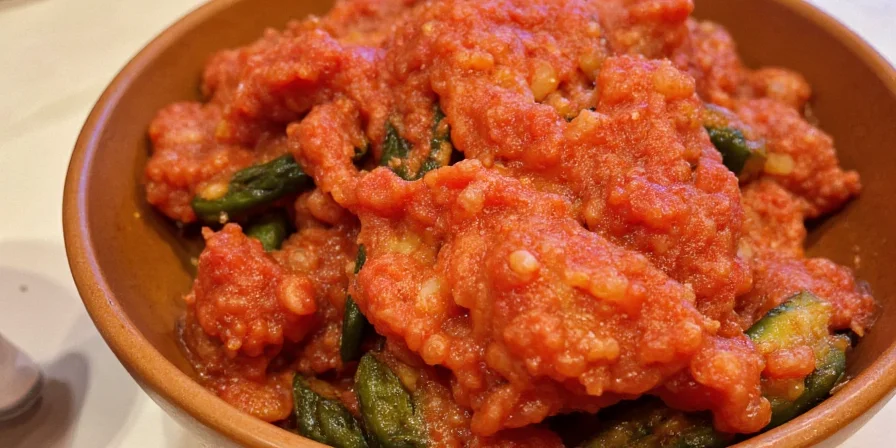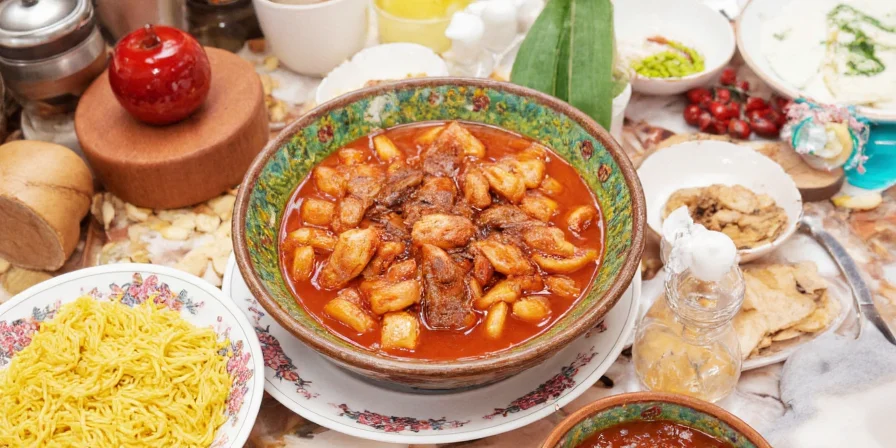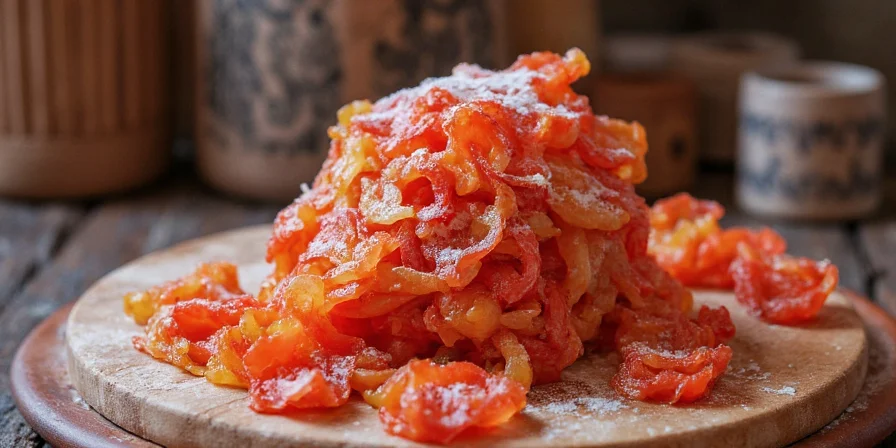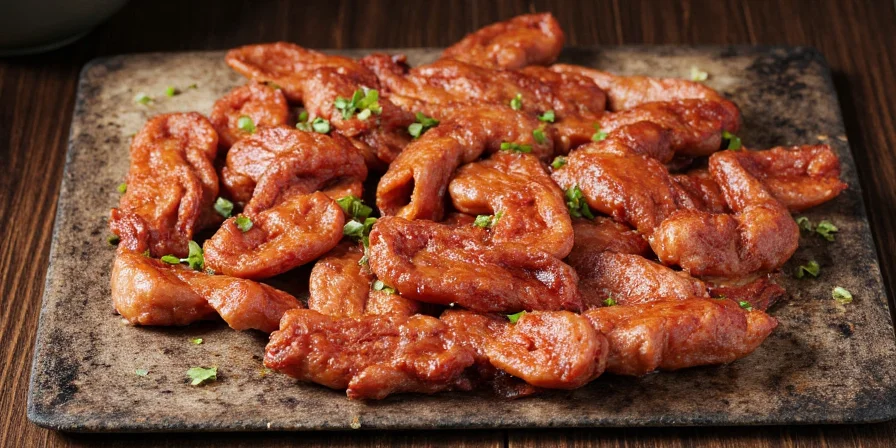🔥 The Ultimate Hot Wing Spice Rub: A Flavor-Packed Adventure!
🍴 Table of Contents
- Introduction
- Why Use a Dry Rub?
- Key Ingredients in a Hot Wing Rub
- How to Make Your Own Hot Wing Rub
- Pro Tips for the Best Results
- Exploring Flavor Profiles
- Dry Rub vs. Sauce – What’s Better?
- FAQ: Hot Wing Rub Edition
- Conclusion
🔥 Wings, Fire, and Flavors: Welcome to Rub Heaven
Ever bitten into a chicken wing that made you stop mid-conversation and ask yourself, “What magic is this?” You’re not alone. That moment often comes from one unsung hero: the hot wing spice rub.

Unlike sauces that sit on top, dry rubs dive deep into the skin, seasoning every fiber with flavor before it even hits the grill or fryer. Whether you're a seasoned pitmaster or a weekend warrior at the BBQ, mastering your own blend of hot wing spice rub can be a game-changer.
Why Bother with a Dry Rub?
Dry rubs are like the foundation of a house — get it right, and everything else builds beautifully from there. Here’s why they deserve your attention:
- Deep penetration: Salt and spices work together to season meat beneath the surface.
- Better crust: A good rub helps form a deliciously crispy bark.
- Flavor complexity: You control the balance between heat, sweetness, smokiness, and tang.
- No soggy skin: Skip the sauce until the end and avoid wetting down your perfect crispness.

🔥 Key Ingredients in a Hot Wing Rub
A classic hot wing rub usually starts with a base of salt, pepper, and garlic powder — but don’t stop there! Here’s a quick breakdown of must-have players:
| Ingredient | Purpose | Popular Varieties |
|---|---|---|
| Salt | Seasoning & moisture extraction | Kosher, Sea Salt, Himalayan Pink |
| Black Pepper | Pungency & earthiness | Whole cracked, ground |
| Paprika | Color + subtle sweetness | Smoked, Hungarian, Spanish (Pimentón) |
| Cayenne | Heat source | Mild to extra-hot options |
| Garlic Powder | Umami boost | Granulated, roasted garlic powder |
| Onion Powder | Bold background flavor | Regular, dehydrated |
| Brown Sugar | Balance heat + caramelization | Light or dark brown sugar |
| Cumin | Earthy warmth | Ground, toasted cumin seeds |
👨🍳 How to Make Your Own Hot Wing Rub
The best part? It takes less time than ordering delivery. Let’s break it down:
- Gather your ingredients: Aim for a balanced mix of salty, spicy, sweet, and savory.
- Measure carefully: Don’t eyeball unless you know what works. Start with small batches.
- Mix thoroughly: Use a whisk or mortar and pestle for even distribution.
- Apply generously: Massage the rub into the wings and let them rest for at least 30 minutes.
- Cook your way: Bake, grill, fry — all paths lead to glory when the rub is dialed in.

Basic Recipe to Try:
2 tbsp paprika
1 tbsp cayenne
1 tbsp brown sugar
1 tsp garlic powder
1 tsp onion powder
1 tsp black pepper
1 tsp salt
½ tsp cumin
½ tsp chili powder (optional)
💡 Pro Tips for the Best Results
Now that you’ve got the basics down, here are some pro-level advice to level up your spice game:
- Toast your spices first: Dry-roast whole spices like cumin seeds for more depth.
- Let it rest: Give your wings at least an hour with the rub for better absorption.
- Layer flavors: Add a light coating of butter or oil before applying the rub for extra adhesion.
- Try citrus zest: A bit of lime or lemon zest adds brightness to counterbalance the heat.
- Add herbs for flair: Fresh thyme, oregano, or rosemary can go a long way when dried and mixed in.
- Don’t overdo salt: Especially if using store-bought blends; always taste as you go.

🌶️ Exploring Flavor Profiles
One size doesn’t fit all in the spice world. Customize your rub based on your preferred flavor style:
| Profile | Ingredients to Add | Best For |
|---|---|---|
| Classic American | Paprika, cayenne, garlic, salt | Traditional buffalo-style wings |
| Mexican Twist | Chili powder, cumin, oregano, lime zest | Tacos, nachos, street corn pairings |
| Smoky Southwestern | Smoked paprika, chipotle, cocoa powder | BBQ lovers, grilled meats |
| Sweet & Spicy | More brown sugar, ginger, cinnamon | Glazed wings, Asian fusion dishes |
| Fiery Fusion | Ghost pepper powder, mustard seed, tamarind | Adrenaline junkies and fire-eaters |
🧂 Dry Rub vs. Sauce – What’s Better?
It’s the eternal debate among wing purists. Let’s break it down:
| Aspect | Dry Rub | Sauce |
|---|---|---|
| Flavor Penetration | Deep and even | Surface only |
| Crispiness | Better crust formation | Can make skin soggy |
| Customization | Endless blending options | Limited to existing recipes |
| Prep Time | Quick, but needs resting | Instant, no marination |
| Heat Control | Easier to manage per bite | Uniform heat, harder to adjust |
Ultimately, it’s personal preference — or, dare we say… do both. Apply the rub before cooking and finish with a drizzle of sauce for double flavor impact.
❓ FAQ: Hot Wing Rub Edition
Q: Can I use a dry rub on frozen chicken wings?
A: Not ideal — thaw first for even seasoning and cooking.
Q: How long can I store my homemade spice rub?
A: Up to 6 months in an airtight container, away from direct sunlight.
Q: Do I need to oil the wings before applying the rub?
A: Optional, but a little oil or butter helps the rub stick better.
Q: Is there a low-carb option for sweeteners?
A: Yes! Try erythritol or monk fruit instead of brown sugar.
Q: Can I use this rub on other meats?
A: Absolutely! Works great on pork ribs, brisket, shrimp, or even tofu for veggie versions.
🔥 Final Thoughts: Rub Like a Pro
The hot wing spice rub isn’t just about heat — it’s about layers, balance, and creating a memorable experience with every bite. From basic blends to wild custom mixes, the power is in your hands (and your pantry).

So next time you fire up the grill or preheat the oven, skip the sauce at the start and reach for your favorite rub. Your taste buds — and maybe a few friends — will thank you.
Got a favorite ingredient you swear by in your hot wing rub? Share it in the comments below!











 浙公网安备
33010002000092号
浙公网安备
33010002000092号 浙B2-20120091-4
浙B2-20120091-4